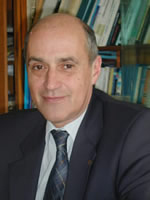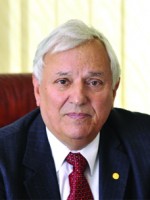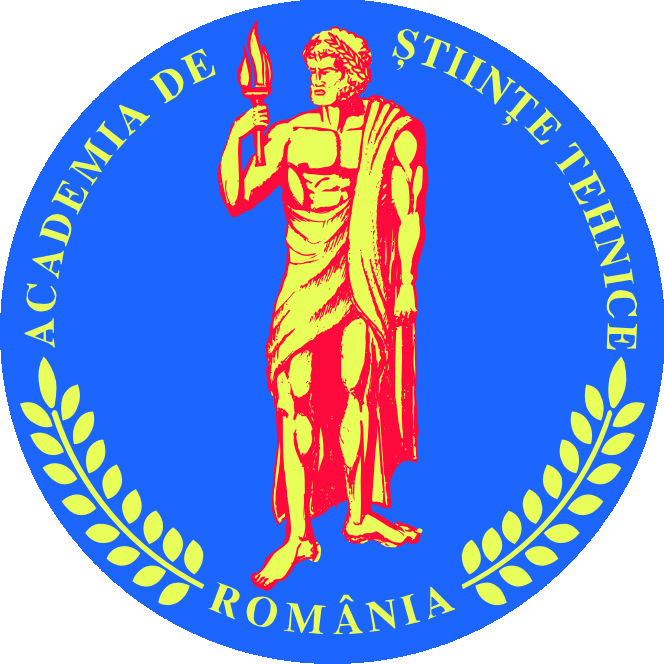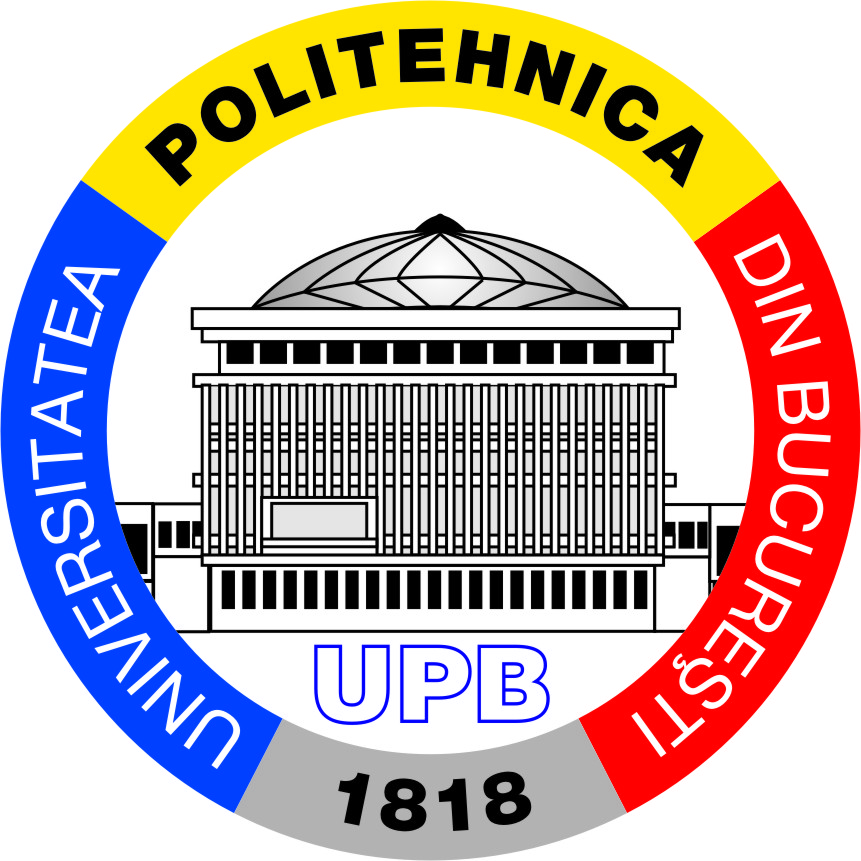|
|
|
|


Keynote Speakers
The Digital Twin: Predictive Engineering Analytics in the Age of Accelerating Change

|
Renaud Meillier |
Abstract
All industries are submitted to changes. In particular the automotive industry is submitted to high pressure on fuel efficiency and emissions reduction. At the same time, new business models are emerging with connected and autonomous vehicles.
These changes create competitive advantages for companies capable of adapting their processes and tools for product engineering.
The digital twin is one of the cornerstones of the new paradigm. This predictive model is used from concept over detailed development to usage of the system. It contains test, 1D, 3D and controls domain information.
This keynote explains with practical cases how customers are adopting the methodology.
Curriculum Vitae
Renaud Meillier is Business Development Director for System Simulation activities with Siemens PLM software.
He started his career at Imagine company in 1998: after being a developer, a project engineer and the manager of a team in charge of the Vehicle Energy Management System Simulation activity (product development, product management, project execution and business development), Renaud Meillier became Product Management Director for Automotive, Other Ground Vehicles and Mechanical Industry segments at LMS, a position he held for 9 years and in which he was responsible for translating customer needs into new product features, in order for the LMS Amesim SW to constantly provide solutions in synchronization with technology and market evolutions and in-line with Model-Based Systems Engineering corporate strategy.
In his current role as business development director since the beginning of 2016, he and his team have been driving business growth, sales training, G2M, customers support and product customization activities.
Renaud Meillier gained a mechanical engineering degree from INSA Lyon and a post-graduate degree in Fluids Mechanics from the same engineering college.
Simulation in Computer Aided Management and Control Decision-Making

|
Florin Gh.Filip |
Abstract
The models are used whenever one aims at understanding the properties and behavior of a certain existing entity (an object, a situation or a process) or intends to prepare an action to change the state of affairs, either through creating a new artifact (by applying design decisions) or through influencing the evolution of a process (by implementing management and control decisions). There are numerous cases when analytic models, which faithfully represent the relationships between input decision variables and system outputs, cannot be set or the resulting ones cannot be effectively handled with available computerized algorithms, or the decision-maker is eager to make the computer evaluate his/her own decisions which are based on his/her previous experience and acquired knowledge. In such situations, one can resort to simulation models and corresponding software tools. In particular, during the choice phase of the decision-making process, “What if?” evaluations of possible actions and sensitivity analysis of the chosen solutions are frequently encountered. The paper aims at giving a balanced presentation of several well established and new methodological issues concerning the usage of computerized simulation models in management and control decision-making processes. The impact of the modern information and communication technologies (ICT), such as web technologies, business intelligence and analytics (BI&A), and mobile cloud computing, on the usage of simulation in decision-making is discussed too. Optimization through simulation, together with an example of its application in discrete part manufacturing and the usage of simulation to understand the possible evolution in the cultural sector are eventually addressed.
Curriculum Vitae
Florin Gheorghe FILIP took his MSc and PhD in control engineering from the TU “Politehnica” of Bucharest in 1970 and 1982, respectively. In 1991 he was elected as a member of the Romanian Academy-RA ( The Romanian National Academy of sciences : www.acad.ro) ). He has been a scientific researcher and managing director ( 1991-1997)of the National R&D Institute in Informatics (ICI) of Bucharest. Currently he is a part-time researcher at the National Institute of Economic Researches (INCE) of the RA, also the director of the Library of the Academy. He was elected as vice-president of RA in 2000 and reelected in 2002 and 2006. He was elected, in 2009 and reelected in 2015, as the chair of "Information Science and Technology " section of the RA. His main scientific interests include large–scale systems control, simulation, and optimization, decision support systems, technology management and foresight. He is the author/coauthor of about 250 technical papers and the author/coauthor of 12 monographs and edited/coedited 23 volumes. More information about him can be found here
You can download his full cv here in pdf format 
CyberSpace: Real and Virtual World
 |
Mr. Ion Dumitrache |
Abstract
Although there is no a consensus in the definition of the “CyberSpace” term, it is present in the everyday life with a major impact on the human existence.
The ICT evolution has imposed this paradigm in all socio-economical areas, in science, culture, art, a.s.o. CyberSpace is including physical infrastructures and networks of communication, embedded systems, networks of networks connecting computer systems, access nodes of users and intermediate routing nodes without a central entity exercising control over the global network.
CyberSpace provides new opportunities to reshape society, culture and human interactions in the sense of broad-less communication, for a new socio-technical approach.
CyberSpace will become a unique area for the development of human relationships and communities, helping to bring the world together for the rapid communication of ideas and values. It would represent a complex, fragile and ever changing ecosystem.
The presentation intends to present an overview on the CyberSpace main features as they appear in connection with both the real world and physical space as well as with the control-computer-communication issues. This would lead to the underlining of the differences between CyberSpace and Virtual Reality in the context of Cyber-Physical Systems Paradigm.
The impact of the CyberSpace concept on the evolution of our world towards a knowledge-based society will be presented further. There will be introduced the new trends leading to the creation and implementation of Cyber-Physical Systems and the impact of this paradigm on the enterprise of the future – the Cyber-Physical Intelligent Enterprise as a network of networks of agents encompassing human intelligence as well as smart cyber-components.
An overview on the evolution of cooperation between smart objects and smart objects and humans into an intelligent environment shall be presented and commented accordingly.
Curriculum Vitae
Ioan Dumitrache gratuaded from “Politehnica” University Bucharest (PUB) with a PhD in Electric Automation (1970). He has completed research internship in the USA, Germany and France. He joined the staff of UPB in 1962, reaching full professorship in 1982 at the Department of Automation.
Professor Dumitrache served as Deputy Dean (1976-1984) and Dean (1984-1990) of the Faculty of Automatic Control and Computers. Starting in 1994, Professor Dumitrache created the Center of Training Human Resources. In the period 2000-2004 he served as Rector of “Politehnica” University of Bucharest. In 2000 he was elected Member of The Academy of Technical Sciences and in 2003 he has elected Corresponding Member of the Romanian Academy.
Professor Dumitrache researches into algorithms and advanced control strategies, intelligent manufacturing, robotics, modeling and controlling bioprocesses, either as Principal Investigator of Coordinator of larger teams. He is the Chief Editor of “Control Engineering and Applied Informatics” and serves as member of the editorial board of similar journals. He is a member of various IFAC Committees and serves as a Romanian representative for the IFAC.
Professor Dumitrache has authored more than 20 books and monographs in tuning engineering, intelligent control of processes, numerical control of processes, optimizations, control engineering, intelligent robots etc. He has authored more than 260 articles in peer-review journals and international proceedings and has edited 16 volumes of national and international conferences in automation and information technology.
Professor Dumitrache is the President of The Roman Society of Automation and Technical Informatics. Since 1994, he is a member of the National University Research Council (NURC), serving as a president of NURC since 1998. He has received numerous awards and distinctions
Large Virtual Manufacturing Systems: Modelling and Simulation between GO TO and the Object Oriented Approach
 |
Florin Ionescu |
Abstract
The presentation covers achievements leading towards achievement of a complex and easy to handle tools, for Research, Technical Development and Innovation and, lust but not least, for Education. It concerns the Object Oriented Modelling and Simulation (OOM&S) of Large Virtual Manufacturing Systems (LVMS). Some evaluation moments along with the evolution of “easy” modelling of any large devices, installation, machines or systems of machines are presented. An important part of the paper refers to the OO modelling of hybrid drives and control systems – using the HYPAS Technology. It shows how scientists succeed to appropriately organize mathematical models, to approach differential equations, and static and dynamic (non)linear properties, to accomplish and facilitate easy approaches for M & S. New notions was used to define the structures: simple properties, modules, groups, chains, branches, installation and so on, towards large systems, by associating working Machines Tools, (Mobile) Robots, Sensors, Human Operators and Logistic, all foreseen with both, Hybrid Direct Drives (HDD) and Control of Solid Bodies, making use of a 3D-M&S for Design, FEM (inclusively Fluid) Technologies. On this way appropriate and easy to understand, to further change or develop and to handle the Model of any Large Systems can be obtained, simulated and virtualized.
Curriculum Vitae
Florin Ionescu was born 1945 in Romania. He graduated 1969 as Dipl.-Ing. and 1981 obtained his PhD in machine-tools and hydraulic drives at Politehnica University Bucharest, where he was assistant and junior professor between 1969–1987. 1981 he received a research award from Alexander von Humboldt Foundation (AvH) and worked between 1987 to 1989 with this support in the field of object oriented modelling and simulation of hydraulic drive systems at the Institute for Fluid Power Drives and Control, RWTH Aachen, Germany (Prof. Backé). Between 1989 - 1991 he was researcher and visiting professor at the Institute for Fluid Systems, Hydraulic Engines and Plants, TU-Darmstadt, Germany (Prof. Stoffel), where he realized also a post-doctoral scientific achievement equivalent to a “habilitation”. In 1991 he was appointed as full professor at the University of Applied Sciences in Konstanz (UAS-KN), Germany and has been visiting professor with other universities. In 1992 Professor Ionescu was appointed by the Steinbeis Foundation as Director of Steinbeis Transfer Centre for Dynamics of Machines, Hydraulics & Pneumatics (STZ Madyn, Ö & P – KN) in order to promote RDTI for the German industry. 1994 Professor Ionescu was nominated by UAS-KN to establish and lead the Mechatronics Research Department of Institute for Applied Research. In 2010 Professor Ionescu retired from UAS-KN and was appointed 2011 as full professor, senate member and Director of Steinbeis Transfer Institute Dynamic Systems at Steinbeis University Berlin. The activity fields of Florin Ionescu are teaching and RDTI. He gave lectures in Mechanics, Hydraulics and Pneumatics, Dynamics of Machines, Modelling and Simulation of Solid Bodies and Hybrid Drives Systems, Applied High Mathematics and Robotics. The research projects were in the fields of Object Oriented Modelling & Simulation for Virtual Manufacturing Systems as Large Scale Systems and its subsystems: Machine Tools, Hybrid Drives and Control, Micro-Nano Robotics, Fault Detection and Prediction, NF for Acupuncture and Man-Machine Systems. Further, he is the author of HYPAS, an Object Oriented Multitasking Interactive Software for Drive Systems and Control. He lead over 150 research, technical development and innovation projects in Romania (until 1987) and Germany, he have organized and directed research stages for researchers from many countries around the world, with support of industry and of German and international research organizations, such as: Alexander von Humboldt Foundation, Federal and Land Ministries of Research and Education, German Research Association–DFG, German Academic Exchange Service–DAAD, Industrial Associations "Otto von Guericke" – AiF, the European Union. Professor Ionescu, is (co)author of several patents, prototypes of micro-nano robots, cutting tools, electro-hydraulic devices and automatic systems, automatic control of sewerage installations. He was (co)editor and (co)author of over 500 papers, of 40 (multi authors) books, lectures scripts, and research reports. Most of them have been published in Romania, Germany, United Kingdom, Belgium, Bulgaria and United States, in international journals of renowned publishing houses (i.a. Springer Science, Elsevier, CRC Press - Taylor & Francis, de Gruyter, Artech House) or presented and published in proceedings of international conferences organized by, i.a., IFAC, IEEE, IMEKO, WCNA, IASTED, ISMA, KES, ASME, JAMS, ICMAs, where he was also active as IPC member. Professor Ionescu was 2001-2005 vice president of the American Romanian Academy of Arts and Sciences (ARA) and Editor-in-Chief of ARA-Journal. He was 2012-2015 Member of the National Ethic Council – Romania, is member of several professional associations and clubs, of technical committees, editorial boards, reviewer for conferences, journals and publishing houses, auditor and evaluator for R & D /RTDI activities and projects. For his contribution in education, science and RDTI and the international co-operation he was awarded with Doctor Honoris Causa-titles, honorary diplomas and professorships of some European Universities
Reactive power control for photovoltaic power plants

|
Mircea-Emil Stremtam |
Abstract
This presentation describes the practical implementation of a custom reactive power control strategy on a 9MW installed power photovoltaic plant, as an integrated component of a SCADA system, in the context of the instability generated by meteorological conditions and their impact on the quality of the energy delivered through power grid.
You can download the full paper here in doc format. ![]()
Curriculum Vitae
You can download his full cv here in jpg format(part1 and 2) ![]()




 See part of his speech as
See part of his speech as 









